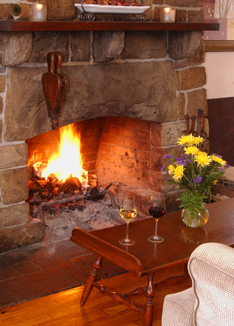
Did you know that by heating your house with wood or burning wood in your fireplace for enjoyment, you are taking a stand in favor of the environment?
It’s true, heating your home with wood does not contribute to the greenhouse effect the way fossil fuels like oil, gas, and coal do. When oil, gas, and coal are burned, carbon that has been buried within the earth for tens of thousands of years is released in the form of carbon dioxide, a by-product of combustion. The result is an increase in the atmospheric concentration of carbon dioxide, the main cause of the greenhouse effect.
Although carbon makes up about half the weight of firewood and is released as carbon dioxide when the wood is burned, it is part of a natural cycle. A tree absorbs carbon dioxide from the air as it grows and incorporates this carbon in its structure. When the tree falls and decays in the forest, or is processed into firewood and burned, the carbon is released again to the atmosphere. This cycle can be repeated forever without increasing atmospheric carbon. Heating with wood, therefore, does not contribute to the greenhouse effect. Moreover, when wood energy displaces the use of fossil fuels, the result is a net reduction in greenhouse gas emissions.



